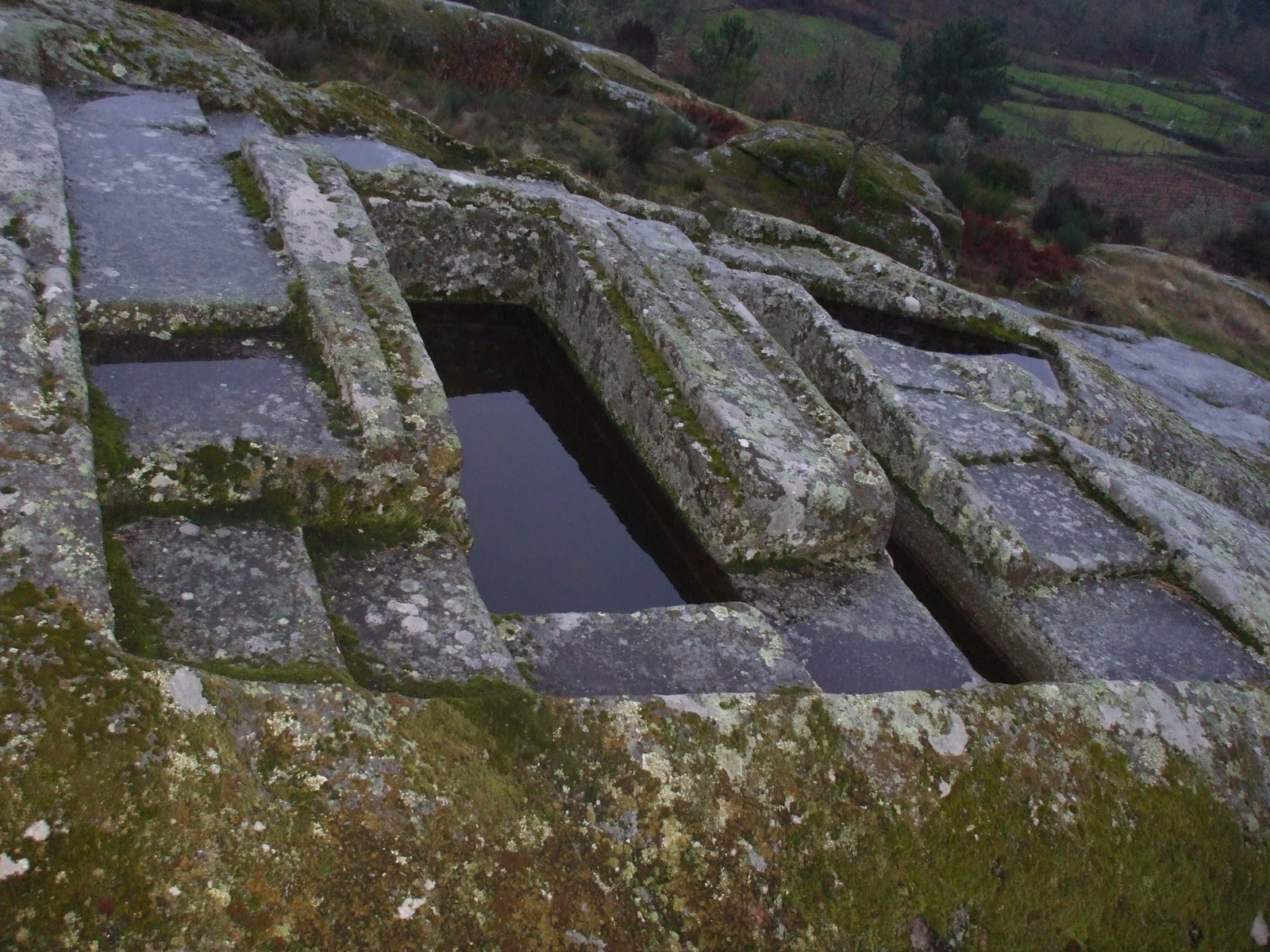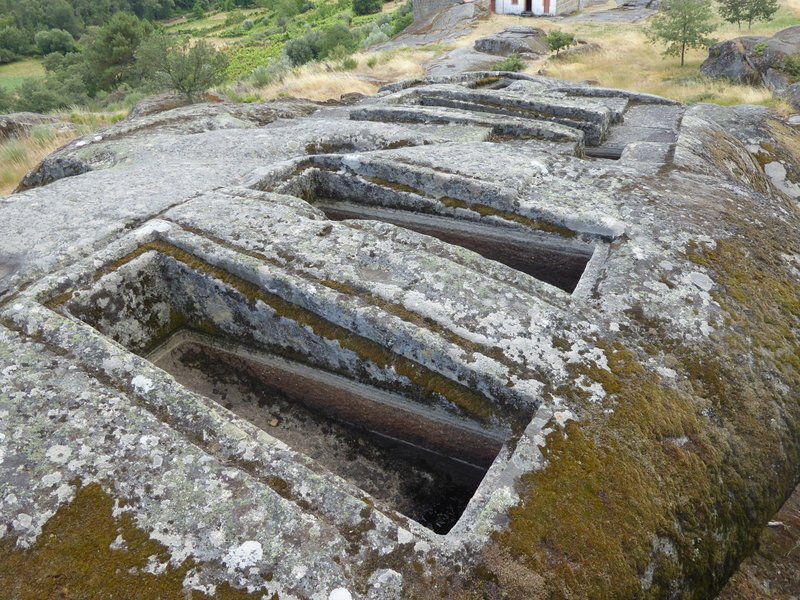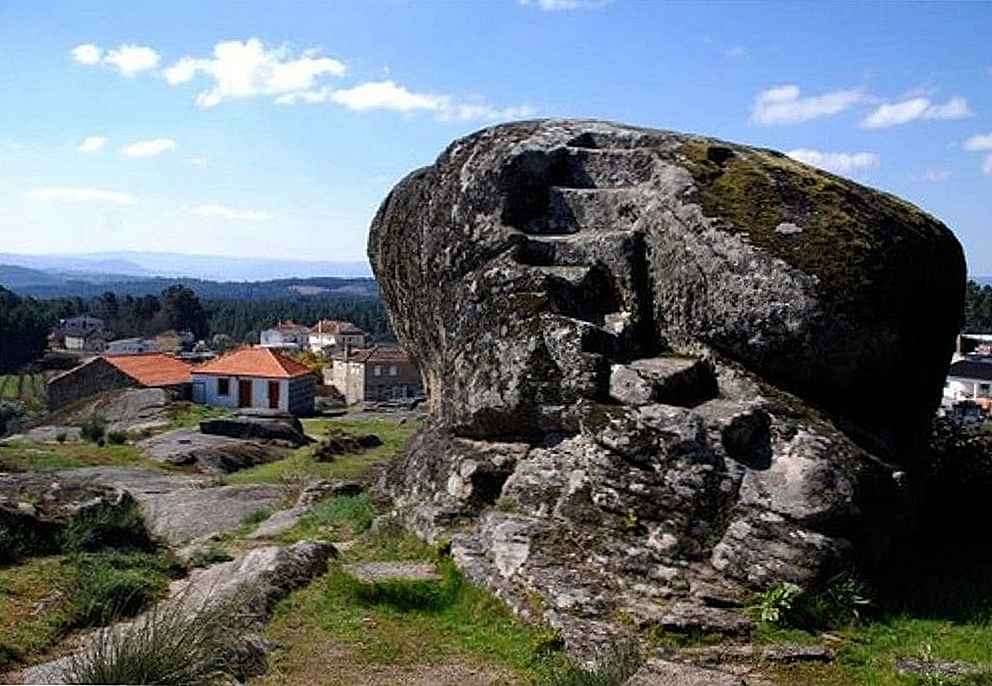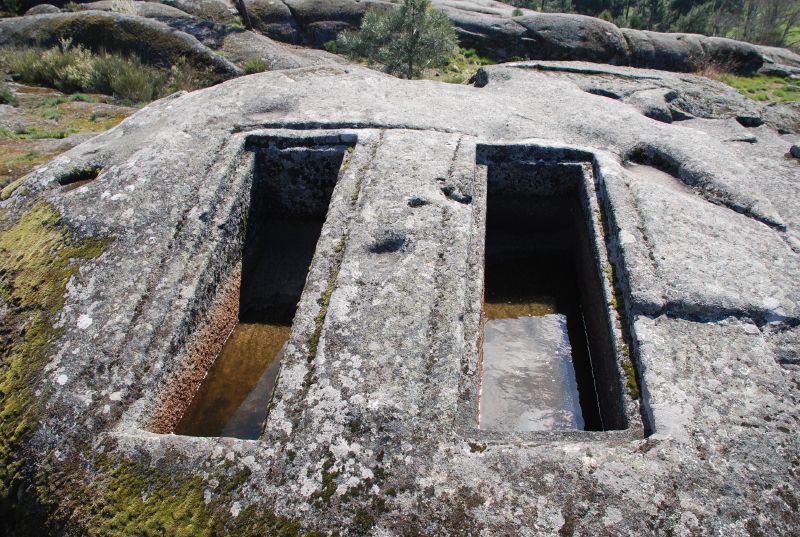The Sanctuary Of Panoias

The Panoias Sanctuary, also known as Fragas de Panoias, is located in Vale de Nogueiras, in the municipality of Vila Real. It is a few kilometers from the city, having once named it.
Its construction is thought to date back to the end of the second century and the beginning of the third century CE.
The sanctuary is an enclosure where three large symmetric openings were carved, as well as several cavities of various sizes, in which access stairs were also built.
On the rock located at the entrance of the Panoias enclosure, several inscriptions were recorded – three in Latin and one in Greek, describing the ritual celebrated, the gods to whom it was dedicated, and those who dedicated it – one of which was destroyed in the last century but was reconstructed to from previous readings and records.
The missing inscription, in Latin, was 6/7 meters east of the second inscription, on the right side of the path through which the sacred area was entered. The text would be oriented towards the rock located at the entrance of the enclosure and says the following:
DIIS (loci) HVIVS HOSTIAE QVAE CA / DVNT HIC INMOLATVR / EXTRA INTRA QVADRATA / AGAINST CREMANTVR / SANGVIS LACICVLIS IVXTA / SVPERE FVNDITVR
“To the Gods and Goddesses of this sacred enclosure. Victims sacrifice themselves, kill themselves in this place. The viscera burn in the square cavities opposite. The blood is poured here next to the small cavities.”
Going up the stairs and passing to the other side of the rock, there is the third inscription:
DIIS DEABVSQVE AE / TERNVM LACVM OMNI / BVSQVE NVMINIBVS / ET LAPITEARVM CVM HOC TEMPLE SACRAVIT / G (neus) C (aius) CALP (urnius) RVFINVS V (ir) C (larissimus) / IN QVO HOSTIAVOTO VOTO
“To all gods and goddesses, to all deities, namely those of the Lapiteas, he dedicated this eternal tank, with this temple, Gaius C.Calpurnius Rufinus, an enlightened man, in which victims are burned by vote.”
This inscription reveals that the Panoias enclosure is dedicated not only to the Severe Gods but also to the gods of the Lapitae, gods of the indigenous community that would exist in the region. Below we have the fourth inscription (in Greek):
Y’l’ICTw CEPA PIDI CYN KANqA Pw KAY MYCTOPIOIC C. C. CALP.RVFINVS V | C.
“The enlightened man Caio Calpúrnio Rufino, son of Caio, consecrated, together with a lake and the mysteries, (a temple) to the highest god Serapis.”
The senator consecrated the sacred precinct to the main deity of the gods of Hell, the Most High Serapis.
Gastra, a round cavity, is immediately behind the inscription. Its function in the ritual would be to roast the victim’s meat, which was consumed on the spot, in front of the deity’s name. The fifth inscription indicates the final act:
DIIS SE (veris) MAN (bus) DIIS IRA (tis) / DIIS DEABVSQVE (loca) / TIS (hic sacravit lacum et) / AEDEM (Gneus Caius Ca) LP (urnius Ru) FINVS (Clarissimus Vir)
“To the angry hellish gods who live here, (dedicated) Gaius c. Calpurnius Rufinus, enlightened man.”
Based on the studies by Geza Alföldy, we can say today that an initiation ritual was conducted on the spot with very precise order and itinerary – the killing of victims, always animals and never human, the sacrifice of blood, the incineration of victims, the consumption of flesh, the revelation of the name of the highest authority in hell, and finally purification.

In the second rock of the enclosure the initiation was repeated to a higher degree, and in the third rock, the highest, there was a small temple, where the main act of initiation took place – ritual death, burial, and resurrection.
Today in any of the three rocks we have traces of the small temples that were an integral part of the enclosure. There are also the different rectangular cavities that served to burn the viscera, a round cavity – gastra, for roasting the meat, and yet another where the blood, fat, and oil were cleaned. Other cavities were related to the small existing temples and were intended to keep the sacred instruments used in the rituals.
Therefore, in Panoias there are testimonies of an initiation rite of the mysteries of the infernal deities. The prescriptions are identified as parts of sacred law but applied to a concrete and precise location.
The choice of this location was therefore not made at random but as a result of specific and previously established criteria. The topography of the site played an important role here.
The first stone contains the stairs, and to the side, the lacus and laciculus. It is visible the lowering made in the granitic rock, to be built a temple, and inside it, ripped to the peak, the purifying lavatory where the mystae abstained before offering the victims, or the deposits where the priests kept the sacrificial instruments.

In the second stone, there is an orifice that would be used for an iron or bronze post, supported by two props, where the animals to be sacrificed were attached, which were garlanded. The priests, in white robes and crowns made of branches of laurel/oak/holly/ivy/Parra, according to the god for whom the sacrifice was destined, carried in their hands the patter, a kind of round metal plate.
When everything was ready, a herald imposed silence and the profane left the sacred place. The priests sprinkled the victim with the spring. Those present drank some wine, with which they also made the libation by pouring a little on the animal’s head.
The bonfire was lit in the respective lacus and incense was burned. There, the Popae, naked from the waist up, led the victim to the altar, where he was wounded to death with an ax by the Cultrarii, who cut his throat. The blood was collected in the shovel and spilled into the laciculi.
The victim was placed on the anclabris table, skinned and quartered. According to an epigraph destroyed decades ago, the victim’s insides were burned in honor of the gods and the other meat was grilled and eaten by those present, in fraternization with the deities.
On this stone is also visible a set of lavacra (the referred purification tanks), as well as the foundations of a second temple, whose ashlars are found in the current walls of the houses of the neighboring village, mainly on the church floor.

A little further north, in the direction we are going, we come across a lacus, where you can see the grooves that supported the iron bars that supported the grill on which the victims’ meat was roasted, and the laciculus, where blood was spilled.
About twenty meters away, on the east side, are the remains of a pre-Roman altar consisting of several dimples connected by grooves, where the Lapiteas would have worshiped their gods, such as Reva Marandiguius, the deity who lived in the heights of Marão, and, hypothetically, to snakes and boars.
Further north, you will find the third stone, with its millenary stairs and handrails. At the top, on a wide platform, the rectangular “graves” opened and the foundations of a third temple, which also disappeared.
Here the incubation took place, where the mysfae “died” symbolically, sleeping all night, dreamed of the deities, who transmitted their oracles to them, and “resurrected” to a “new” life.
C.G.Calpurnius Rufinus, a senator, introduced this cult to Panoias, where there would already be an indigenous cult.
He was probably a senior official in the Roman provincial government. Its original language was Greek, but in the inscription the use of the word “mystaria” instead of “mysteria” demonstrates the use of a Doric or pseudo-Doric dialect.
The data on its origin makes it possible to assume with great probability that it is Perge de Panfilia, a city of Doric tradition and one of the centers of the cult of Serapis, located in Asia Minor.
